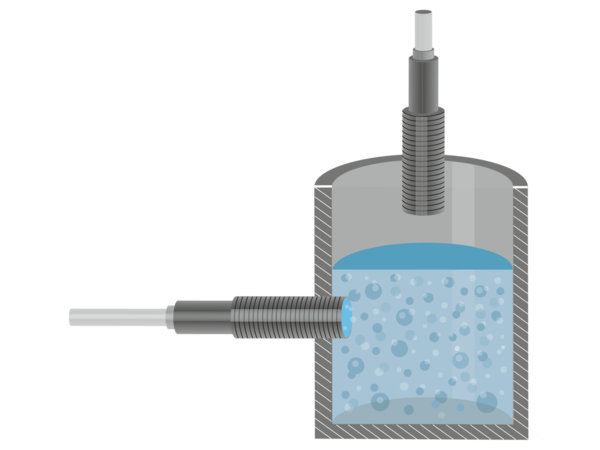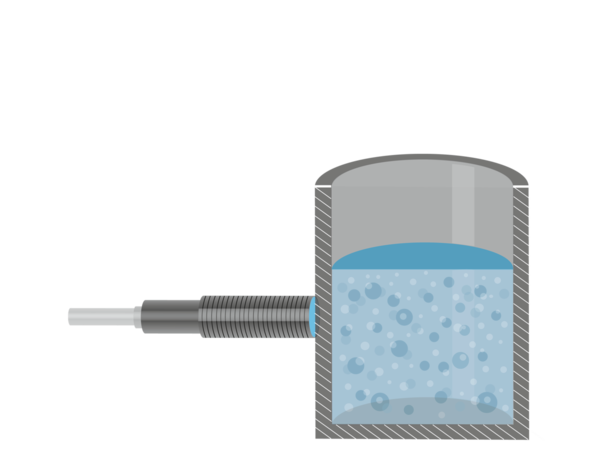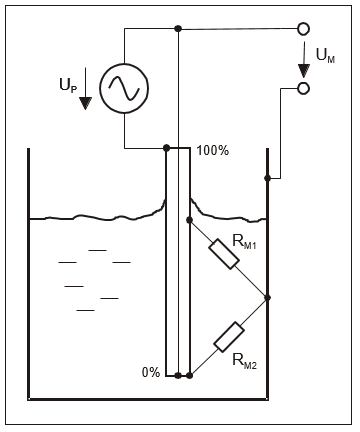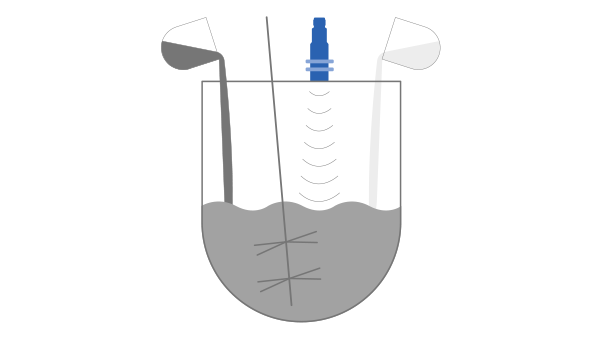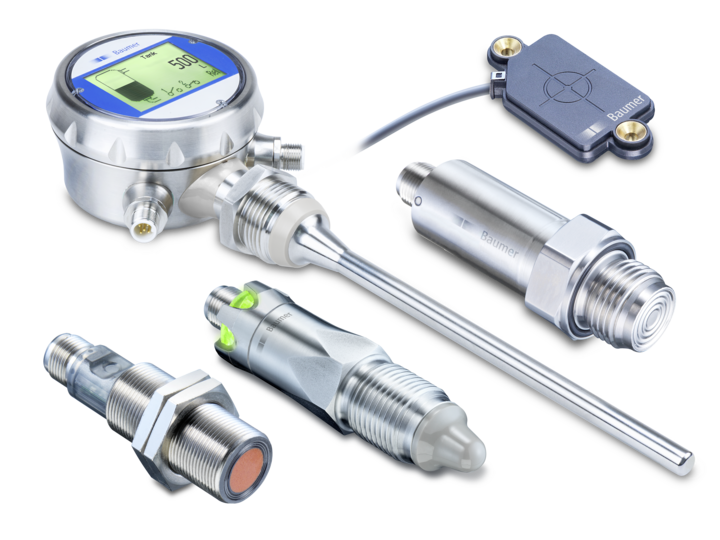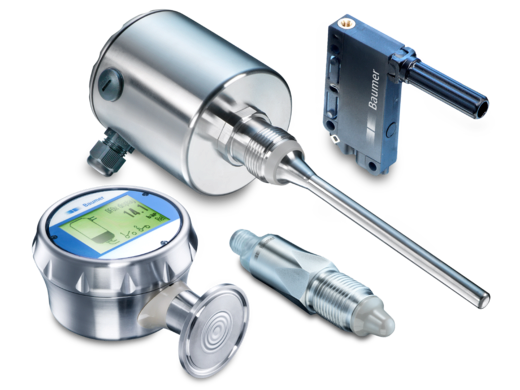Definition: Level measurement
Frequency sweep technology
The sensor tip integrates an electrode which together with the environment forms a capacitor. The dielectric constant (DC value) of the medium determines its capacity value which together with a coil in the sensor electronics builds a resonance circuit. The sensor switching signal is triggered according to the measured resonance frequency and the programmable trigger thresholds.
The universal point level sensors of the CleverLevel series detect any medium, whether solid, liquid or adhering and this way are the clever alternative to vibrating forks.
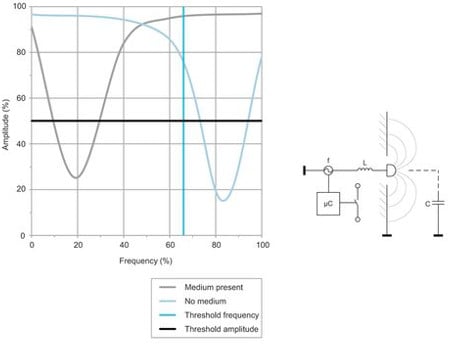
Capacitive level measurement
By principle, capacitive level sensors act like open capacitors. Between the measuring electrode and the GND electrode an electrical field builds up. A material with a dielectric constant higher than that of air entering the electric field will increase the field's capacity according to the material. This increase in capacitance measured by the electronics generates a signal evaluated by signal processing and if being of the relevant magnitude will trigger the switching output.
Photoelectric level measurement
The sensor principle of optical level sensors is based on the alteration of the critical angle for total internal reflection, depending on whether the sensor tip is immersed in a fluid or surrounded by air. The sensing tip immersed in fluid will deflect the light beam into the fluid and make the sensor output change its switching status. The fluid may be electrically conductive, turbid or clear.
Level sensors installed at hoses or ascending pipes operate on a similar principle, but without media contact. If the sensing tip is not immersed in fluid, the emitted light will directly meet the receiver. If fluid enters the detection area, a part of the emitted light is deflected so that less amount of light will meet the receiver. The sensor can evaluate this variation in light intensity.
Potentiometric level measurement
The measuring principle of potentiometric level sensors operates on the alternation of the voltage ratio between sensor probe and metal tank wall. The fluid's electrical conductivity and capacity generate an electrical flux field. Here, the sensor probe acts as voltage divider at which the conductivity/capacity ratio is subject to alteration according to filling level. The voltage ratio is proportional to the filling level. Simply, the system of probe and fluid can be considered a potentiometer where alterations in the filling level can be compared to turning a standard potentiometer.
Hydrostatic level measurement
The measuring principle of hydrostatic level sensors operates on pressure measurement, i.e. the pressure at the container bottom is detected by the measuring cell of the pressure transmitter for calculation of the related filling level. With rising filling level, hydrostatic pressure increases by gravity.
Ultrasonic level measurement
Ultrasonic sensors utilize the measured propagation time of ultrasonic signals. They transmit high-frequency sound waves which reflect on the surface of the medium to be detected. The medium may be liquid or in grain or powder form. Ultrasonic sensors unambiguously detect transparent and other objects difficult to detect.
In continuous level measurement, ultrasonic sensors output the measured distance between sensor and media surface as voltage. The output current or voltage is proportional to the distance or level of the medium surface.
